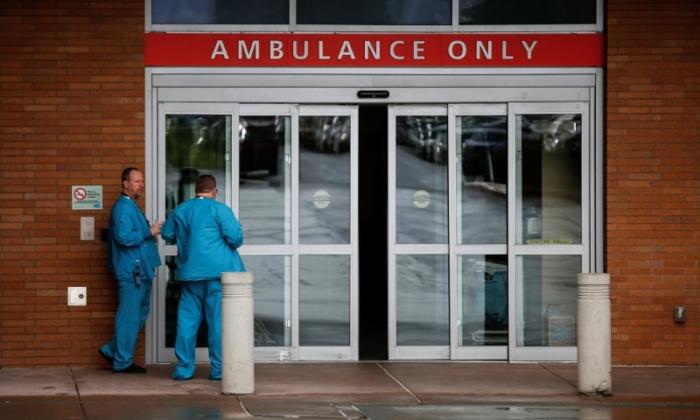Washington state health officials said on Feb. 29 that one person has died from the coronavirus, the first patient to die from the disease in the United States.
President Donald Trump said during a briefing at the White House that the person who died of the virus was in their late 50s and a medically high-risk patient.
The Epoch Times later confirmed with a Washington State Department of Health that the patient was a man. Robert Redfield, director of the Centers for Disease Control and Prevention (CDC), confirmed during the White House press conference that the person had no history of travel to other affected countries and no known contacts with infected individuals. The Centers for Disease Control and Prevention said in a press release that it erroneously misidentified the patient as a woman in a briefing with the president.
Several of the officials at the White House briefing offered condolences to the person’s family.
News of the first fatality arrived one day after health officials in California, Oregon, and Washington state confirmed that three patients were infected by unknown means.
If confirmed by the CDC, along with a similar case of unknown origin announced on Feb. 26 in California, that would bring to four the number of diagnosed individuals in the United States with no history of travel to a country where the virus is circulating and no close contact with an infected person.
Taken together, the four cases are a sign that the virus is now spreading within at least four separate locations on the West Coast, spanning nearly 900 miles from California’s Silicon Valley region in Santa Clara County north, to the Puget Sound near Seattle.
Health authorities say it means the respiratory disease is no longer an imported phenomenon but has taken up residence in the United States.
“What we know now is that the virus is here, present at some level, but we still don’t know to what degree,” said Dr. Sara Cody, chief public health officer for Santa Clara County, speaking of the newly diagnosed case there, the latest of three in her county and the 10th detected in California.
“This case does signal to us that it is now time to shift how we respond,” she told a news conference on Feb. 28.
The latest patients were diagnosed based on results obtained in their respective states from CDC-supplied test kits and are considered “presumptive positive” cases pending CDC confirmatory testing, the U.S. agency said.
Even as confirmation was pending there, local authorities were already working to trace close contacts the patients had with others in a bid to curb transmission.
Until this week, the CDC had counted just 15 confirmed cases in six states as having been detected through the U.S. public health system since Jan. 21, none fatal. Most were contracted by individuals while traveling in China. Only two person-to-person transmissions were documented among them, both between married couples.
An additional 47 cases have been confirmed among people recently repatriated, either from the Diamond Princess cruise ship quarantined in Japan or from the Chinese city of Wuhan, the supposed epicenter of the outbreak, according to the CDC.
Health officials said the advent of locally transmitted infections means authorities need to expand their focus from detecting a relatively limited number of cases, identifying close contacts and isolating them, to one that also emphasizes greater prevention among the public at large.
In particular, individuals should be more vigilant about basic hygiene measures, such as washing hands often, avoiding touching their faces, covering coughs and sneezes and staying home from school or work whenever ill, Cody said.





